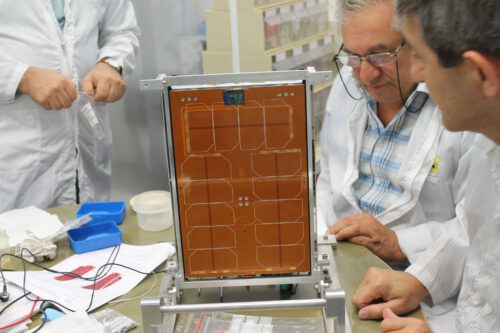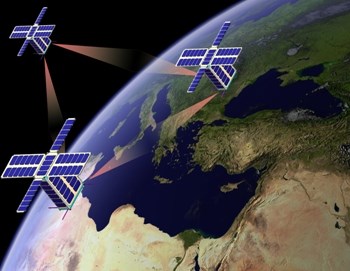As part of the cooperation, a mission receiver and a satellite computer were developed for the Adelis-Samson project. In this project, three nanosatellites will be launched that will be transported in space in an autonomous manned flight

Close technological and research cooperation between the Technion and the Aerospace Industry led to the development of an advanced and unique mission shelter of its kind in the world of tiny satellites. The activity was carried out as part of the Technion's "Adlis-Samson" project, under which three nanosatellites will be launched into space this November and will operate together in a satellite constellation. The research is designed to help receive signals from the Earth and calculate an exact location for the purposes of rescue and rescue and locating distress signals.
The mission receiver, developed and built especially for the "Adlis-Samson" project by Elta Systems, a division and subsidiary of the Aerospace Industry, includes an advanced receiver capable of detecting and recording signals coming from the ground and an information processing system designed to locate the location of the transmission. This is a tiny system suitable for nano-satellites, which will enable a significant expansion of the possible range of applications of these satellites. This system integrates together with the three mission computers in the constellation of satellites developed by the space plant of the aerospace industry and integrated into the nanosatellites.
The Adelis-Samson project was developed in recent years by a team of researchers led by Prof. Pini Gurfil, head of the Asher Space Research Institute and a faculty member in the Faculty of Aeronautics and Space Engineering at the Technion, with the support of the Adelis Foundation and the Israel Space Agency of the Ministry of Science and Technology. As part of the project, three nanosatellites will be launched into space and will fly in an autonomous structure flight, without human intervention. The satellites will be used to receive signals from the Earth and to calculate the location of the transmission source for rescue and rescue purposes, detection and identification, remote sensing and environmental monitoring. The software and algorithms that will manage the flight were developed in the Laboratory for Distributed Space Systems at the Technion.
"During more than five years we have worked closely with the engineers of the aerospace industry on advanced technological development," said Prof. Finney Gurfil. "This is a model of cooperation between academia and industry, which enables the combination of advanced basic research and technology, so that both parties get to develop and implement an innovative system. We thank the engineers of the aerospace industry for their professionalism and commitment. The developed system places the Technion's 'Adlis-Samson' satellites at the global technological forefront of the development of tiny satellites."

The CEO of the Aerospace Industry, Nimrod Shafer: "This is a development that will take part in fascinating research in the field of new space. We see the utmost importance in the close cooperation with the Technion, as well as other academic institutions, in order to promote academic research and the future developments and technologies that we initiate. The receiver developed for this project breaks new ground in the field of locating from space electromagnetic signals transmitted from the ground and is based on the engineering knowledge and many years of experience in the field of satellites, electronic warfare, intelligence decoding systems and communication networks.
The activity took place in a close and multi-year collaboration between the researchers of the Asher Institute for Space Research at the Technion - Avner Kidar, Hovik Aglarian, Avitar Adlerman, Dr. Alex Fried and Prof. Pini Gurfil - and the engineers of the Intelligence Plant and the Space Plant of the Aerospace Industry.
The Technion's "Adelis-Samson" academic project involves many organizations including: the Adelis Foundation, the Goldstein Foundation, the Israel Space Agency at the Ministry of Science, Rafael, the Aerospace Industry and more.

3 תגובות
TEA's Mabat Hallel plant is not built for tailoring quick solutions.
A factory is an integrator, receives satellite components from Israeli industries and assembles them inside a satellite.
He does not have a good ability for rapid planning within the company.
ITA will probably continue to focus on projects in front of Moshebat where the requirements are high, the pace is slow and the budgets are large.
In March of this year, Rocket Labs purchased a Canadian company for the construction of tiny satellite components (Sinclair Interplanetary) with the aim of giving customers a full basket of satellite construction and launch services (on any platform, not just that of Rocket Labs). It may be worthwhile for the Israel Defense Forces to develop such a capability, and offer parties interested in a mission in space to tailor the solution and the appropriate satellite for them, build it and launch it.
And the system name should be SPG (the opposite of GPS).
(With a little more development this could be a system for positioning missile launches, and I'm sure it hasn't gone unnoticed by the developers).